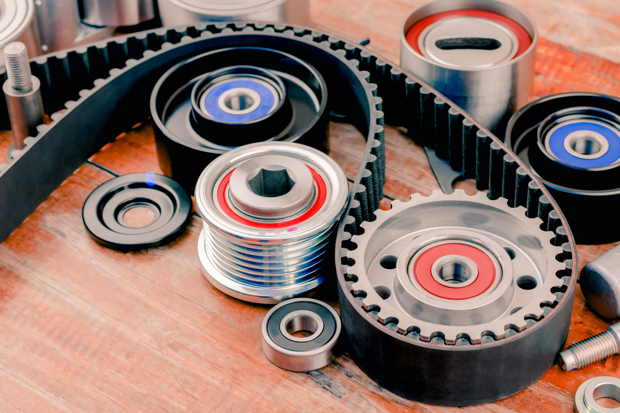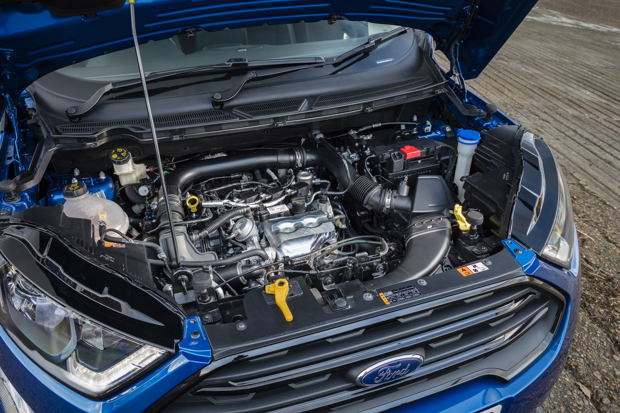Which cars have a wet belt?
We receive more questions from readers about wet belts than almost anything else. Our guide explains what they are, the potential problems and what you can do to avoid them.

- What is a wet belt on a car
- Which cars are fitted with wet belt engines
- How to maintain a car with a wet belt
What is a wet belt on a car?
The belt in question is the timing belt, also called a cam belt, which is one of the most common means of controlling the opening and closing of the valves in the engine.
The timing belt ensures that the valves operate in synchronisation with the up and down movement of the pistons - hence the timing part - so it is crucial for the engine to function properly. A failed belt can result in valves and pistons making contact with each other, which can mean very large repair bills and even a destroyed engine.
In the majority of engines the timing belt is ‘dry’ in that it is not lubricated by the engine oil. However, some engines use a ‘wet’ belt, where the timing belt is encased and runs within the engine oil for lubrication and cooling. Wet belt designs are also sometimes called belt-in-oil.
Which cars have wet belt engines?
The following engines are fitted with a wet belt. If you are unsure what kind of timing belt your vehicle has, you may be able to tell by looking under the bonnet - dry belts are attached to the end of the engine and should be visible by looking behind any cover, whereas wet belts have to be encased within the engine to retain the oil.
Citroen
All 1.0-litre and 1.2-litre PureTech petrol engines (EB2 Gen3 versions from 2023 have a timing chain)
Ford
1.0-litre EcoBoost petrol (1.0-litre EcoBoost MHEV from 2018 uses a timing chain)
1.5-litre EcoBoost petrol
2.0-litre EcoBlue diesel
Honda
1.0-litre VTEC Turbo petrol
Peugeot
All 1.0-litre and 1.2-litre PureTech petrol engines (EB2 Gen3 versions from 2023 have a timing chain)
Toyota
All 1.0-litre and 1.2-litre PureTech petrol engines (EB2 Gen3 versions from 2023 have a timing chain)
Vauxhall
All 1.0-litre and 1.2-litre PureTech petrol engines (EB2 Gen3 versions from 2023 have a timing chain)
What are the problems with wet belt cars?
There are two key problems that can occur with wet belts. The first is that the engine oil degrades over time, meaning that the wet belt is not sufficiently lubricated and wears out earlier than expected.
The second issue can be that a worn wet belt begins to break up. This can cause the engine oil to become contaminated, with other parts of the engine then failing to receive enough lubrication.
Engine oil naturally degrades and performs less well over time, regardless of the type of engine or type of timing belt, which is why oil changes in keeping with the recommended service schedule - or even more frequently than that - are essential, but with a wet belt engine this is even more important.

What should I do if I have a wet belt car?
The first thing to do is ensure your vehicle is up to date with its servicing. Changing the engine oil and filter in line with the manufacturers recommendations is the starting point, but changing these items more frequently than this is a sensible precaution to ensure the longevity of your wet belt.
It is also crucial to ensure that you or your garage are using the correct specification of engine oil as some manufacturers issued updated guidance.
The same approach should be taken in respect of timing belt replacement, as again some manufacturers changed the recommended timing belt interval in response to owners experiencing problems.
Replacing a timing belt can be a relatively expensive job. But unless you plan to sell your vehicle soon, having the timing belt replaced and keeping on top of routine servicing are sensible preventative measures and give you the best chance of avoiding issues in the future.
What is the life expectancy of a wet belt?
When first introduced there was an expectation that the lubrication would mean timing belt intervals could be extended, and at the time manufacturers provided replacement intervals beyond 100,000 or even 150,000 miles.
However, following the problems that some owners experienced these were then revised, with the intervals now as low as 60,000 miles depending on the age of the vehicle, driving conditions and service history.
As with conventional dry timing belts, if you plan to keep your car longer term then it is sensible to be cautious with the recommended replacement intervals. Contact your dealer for the latest guidance and consider having it changed ahead of schedule, particularly if you are unsure of your vehicle’s service history.
Should you buy a car with a wet belt?
If you are buying a new car with a wet belt, the risks are far smaller. You can ensure that servicing is done correctly and on time from day one, and you will also benefit from revised servicing guidance and specification changes by the manufacturers that should mean you are less likely to encounter problems.
If you are considering a used car with a wet belt, you either need to be certain that it has a complete service history or budget for a replacement timing belt soon after taking ownership - and potentially both if you want to be extra cautious.
On the other hand, there is the potential for bargains as some drivers are looking to sell their cars because of the wet belt issue even if their particular vehicle is not necessarily at risk of experiencing issues. As with any used car, do your homework, budget for the necessary maintenance and if in doubt, walk away.
Why were wet belts invented?
Wet belt designs have been around for almost 20 years and like several other innovations in engine design one of the key motivators was greater efficiency. Lubricating the timing belt helps to reduce friction, in turn reducing fuel consumption and CO2 emissions. The lubrication provided by the oil should also extend its lifespan, although this is not quite how it turned out.
